Related Research Articles
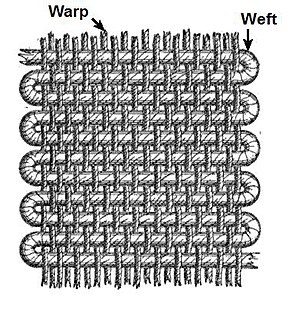
Weaving is a method of textile production in which two distinct sets of yarns or threads are interlaced at right angles to form a fabric or cloth. Other methods are knitting, crocheting, felting, and braiding or plaiting. The longitudinal threads are called the warp and the lateral threads are the weft, woof, or filling. The method in which these threads are inter-woven affects the characteristics of the cloth. Cloth is usually woven on a loom, a device that holds the warp threads in place while filling threads are woven through them. A fabric band that meets this definition of cloth can also be made using other methods, including tablet weaving, back strap loom, or other techniques that can be done without looms.
This timeline of clothing and textiles technology covers the events of fiber and flexible woven material worn on the body; including making, modification, usage, and knowledge of tools, machines, techniques, crafts, and manufacturing systems (technology).

The spinning jenny is a multi-spindle spinning frame, and was one of the key developments in the industrialization of textile manufacturing during the early Industrial Revolution. It was invented in 1764 or 1765 by James Hargreaves in Stanhill, Oswaldtwistle, Lancashire in England.
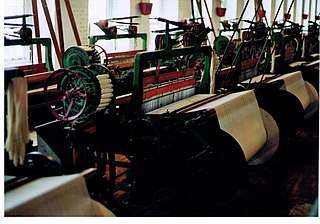
A power loom is a mechanized loom, and was one of the key developments in the industrialization of weaving during the early Industrial Revolution. The first power loom was designed in 1786 by Edmund Cartwright and first built that same year. It was refined over the next 47 years until a design by the Howard and Bullough company made the operation completely automatic. This device was designed in 1834 by James Bullough and William Kenworthy, and was named the Lancashire loom.
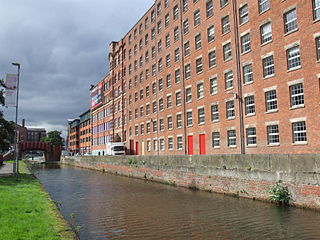
A cotton mill is a building that houses spinning or weaving machinery for the production of yarn or cloth from cotton, an important product during the Industrial Revolution in the development of the factory system.
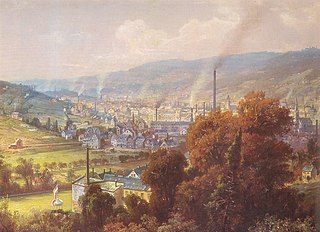
Textile manufacture during the Industrial Revolution in Britain was centred in south Lancashire and the towns on both sides of the Pennines. In Germany it was concentrated in the Wupper Valley, Ruhr Region and Upper Silesia, in Spain it was concentrated in Catalonia while in the United States it was in New England. The main key drivers of the Industrial Revolution were textile manufacturing, iron founding, steam power, oil drilling, the discovery of electricity and its many industrial applications, the telegraph and many others. Railroads, steam boats, the telegraph and other innovations massively increased worker productivity and raised standards of living by greatly reducing time spent during travel, transportation and communications.

The textile industry is primarily concerned with the design, production and distribution of yarn, cloth and clothing. The raw material may be natural, or synthetic using products of the chemical industry.
Textile manufacturing is a major industry. It is largely based on the conversion of fibre into yarn, then yarn into fabric. These are then dyed or printed, fabricated into cloth which is then converted into useful goods such as clothing, household items, upholstery and various industrial products.
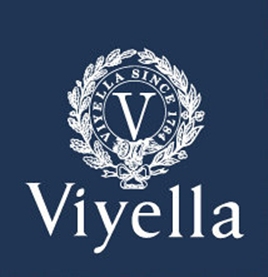
Viyella is a blend of wool and cotton first woven in 1893 in England, and soon to be the "first branded fabric in the world". It was made of 55 percent merino wool and 45 percent cotton in a twill weave, developed by James and Robert Sissons of William Hollins & Co, spinners and hosiers. The brand name, first registered as a trademark in 1894, and registered in the United States in 1907, soon covered not only the original fabric, to be sold by the yard, but also clothing. At first this was made by separate businesses, but it was not long before Hollins started producing their own clothes and offering franchises to manufacturers who would use the Viyella label. Following increasing emphasis on garment manufacture over the years, Viyella is now a fashion brand for clothes and home furnishings made of a variety of fabrics. The original wool/cotton blend is no longer on sale.
The manufacture of textiles is one of the oldest of human technologies. To make textiles, the first requirement is a source of fibre from which a yarn can be made, primarily by spinning. The yarn is processed by knitting or weaving, which turns yarn into cloth. The machine used for weaving is the loom. For decoration, the process of colouring yarn or the finished material is dyeing. For more information of the various steps, see textile manufacturing.

Howard & Bullough was a firm of textile machine manufacturers in Accrington, Lancashire. The company was the world's major manufacturer of power looms in the 1860s.

In textile manufacturing, finishing refers to the processes that convert the woven or knitted cloth into a usable material and more specifically to any process performed after dyeing the yarn or fabric to improve the look, performance, or "hand" (feel) of the finish textile or clothing. The precise meaning depends on context.

Rutland Mill was a cotton spinning mill on Linney Lane, in Shaw and Crompton, Greater Manchester, England. It was built by F. W. Dixon & Son in 1907 for the Rutland Mill Co. Ltd. It was taken over by the Lancashire Cotton Corporation in 1935. By 1964, it was in the Courtaulds Group. In the late 1980s, as Courtaulds moved operations to other parts of the world, the mill was bought by Littlewoods who demolished it and replaced it with a new automated storage warehouse.

Elm Mill, is a four-storey cotton spinning mill in Shaw and Crompton, Greater Manchester, England. It was built in 1890 for the Elm Spinning Company Ltd., and was called Elm Mill until it closed in 1928. It was revived by the Lancashire Cotton Corporation in 1929 and called Newby Mill. LCC and all their assets passed to Courtaulds in 1964. Production at Newby finished in 1970, and it was used for warehousing. Subsequently, now named Shaw No 3 Mill, it became part of Littlewood's Shaw National Distribution Centre.
Sir Edward Tootal Broadhurst, 1st Baronet DL, JP was a director and eventually chairman of Tootal Broadhurst Lee, one of the largest cotton manufacturers in Manchester. He was also the chairman of the Manchester and Liverpool District Bank, and a director of the London and North Western Railway and the Atlas Insurance Company. He was High Sheriff of Lancashire in 1906–7.

The Tootal, Broadhurst and Lee Building at No. 56 Oxford Street, in Manchester, England, is a late Victorian warehouse and office block built in a neo-Baroque style for Tootal Broadhurst Lee, a firm of textile manufacturers. It was designed by J. Gibbons Sankey and constructed between 1896 and 1898. It has been designated a Grade II* listed building.

The history of cotton can be traced to domestication. Cotton played an important role in the history of India, the British Empire, and the United States, and continues to be an important crop and commodity.

Odisha Ikat is a kind of ikat, a resist dyeing technique, originating from Indian state of Odisha, adapted from ikat in Indonesia. Also known as "Bandha of Odisha", it is a geographically tagged product of Odisha since 2007. It is made through a process of tie-dying the warp and weft threads to create the design on the loom prior to weaving. It is unlike any other ikat woven in the rest of the country because of its design process, which has been called "poetry on the loom". This design is in vogue only at the western and eastern regions of Odisha; similar designs are produced by community groups called the Bhulia, Kostha Asani, and Patara. The fabric gives a striking curvilinear appearance. Saris made out of this fabric feature bands of brocade in the borders and also at the ends, called anchal or pallu. Its forms are purposefully feathered, giving the edges a "hazy and fragile" appearance. Ikat's equivalent usage in Malay-Indonesian language is ikat or mengikat, which means "to tie or to bind".
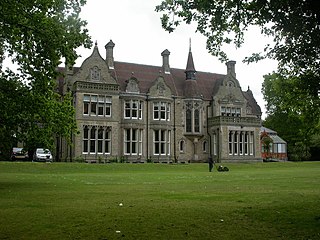
Robert Scott was a Manchester businessman who was one of the founders of the Tootal Broadhurst Lee cotton company.

Piece goods were the textile materials sold in cut pieces as per the buyer's specification. The piece goods were either cut from a fabric roll or produced with a certain length, also called yard goods. Various textiles such as cotton, wool, silk, etc., were traded in terms of piece goods. The prices were determined as per the fabric quality.
References
- 1 2 3 4 5 6 7 "Tootal Broadhurst Lee Co". Grace's Guide to British Industrial History. Retrieved 12 August 2016.
- 1 2 "Biography: Henry Lee JP", Weaste Cemetery Heritage Trail. Retrieved 12 August 2016
- ↑ Stanley Chapman, Merchant Enterprise in Britain: From the Industrial Revolution to World War I, Cambridge University Press, 2003, p.200
- ↑ "head-piece / cloth - item 2009,8012.3", British Museum. Retrieved 12 August 2016
- ↑ Tootal, Broadhurst and Lee Building, 56 Oxford Street, Manchester, British Listed Buildings. Retrieved 12 August 2016
- ↑ Joseph Gibbons Sankey, Dictionary of Scottish Architects. Retrieved 12 August 2016
- 1 2 3 4 5 Matthew Dennison, "Tootal recall", Country Life, 20 January 2016, pp.72-74
- ↑ Heywood, D.W. (1995). Chemistry of the Textiles Industry. Springer Science & Business Media. p. 173. ISBN 9780751400540.
- ↑ John Hartley, 6th Battalion, the Manchester Regiment in the Great War: Not a Rotter in the Lot, Casemate Publishers, 2010, p.17
- ↑ "Tootal - The Company History and its products (ties, scarves etc)", The Fedora Lounge. Retrieved 12 August 2016
- ↑ "Why the iconic Tootal scarf is so timeless", Menswear Style, 13 November 2015. Retrieved 12 August 2016